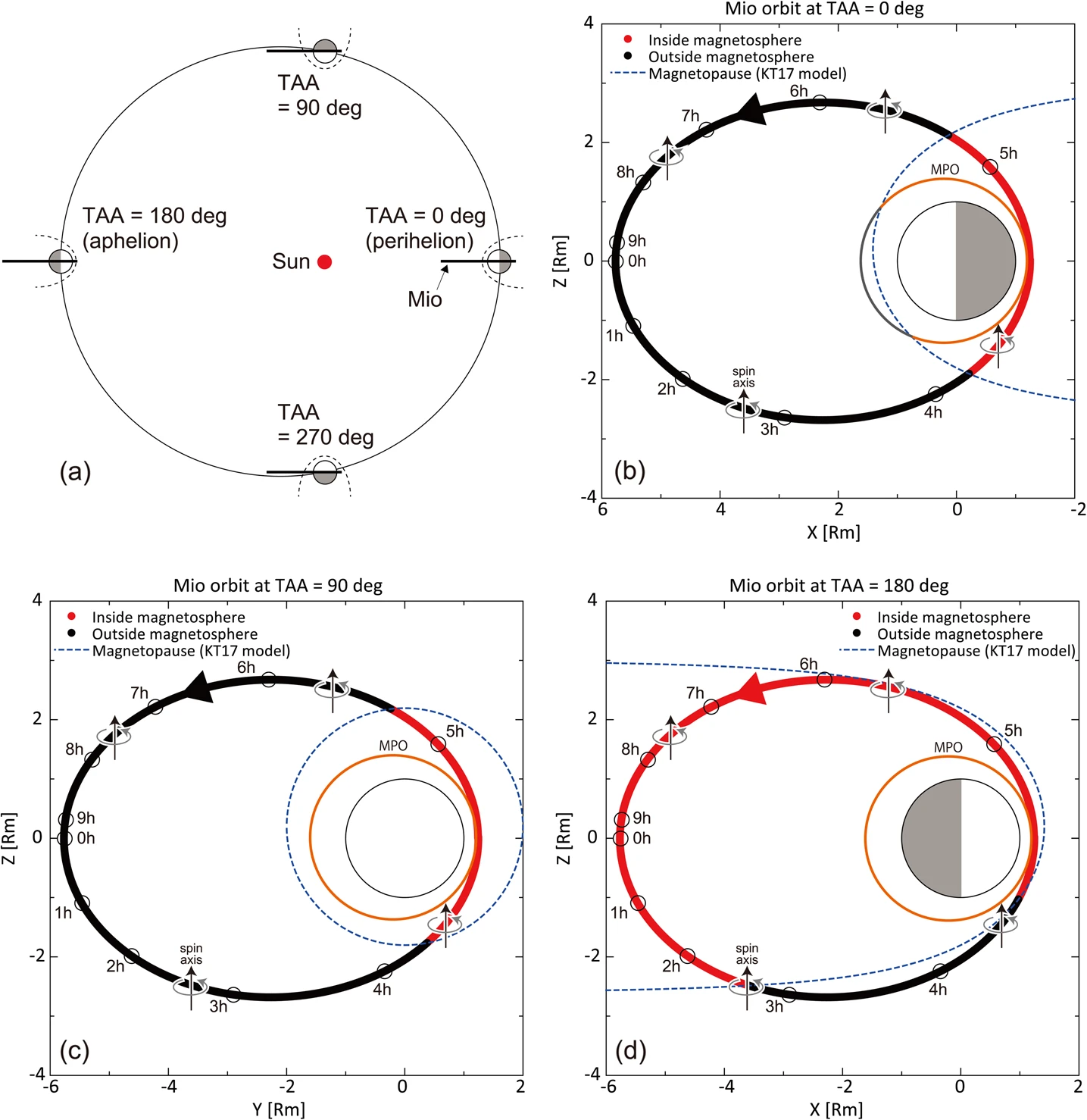- Magnetic Field Investigation (MGF)
- Plasma Wave Investigation (PWI)
- Wire Probe Antenna (WPT)
- Mercury Electric Field In-Situ Tool (MEFISTO)
- Search Coil (SC)
- Spectroscopie Ondes Radio & Bruit Electrostatique Thermique (SORBET)
- Mission Data Processor (MDP)
- EFD, WFC, and OFA (EWO)
- Active Measurement of Mercury’s Plasma (AM2P)
- Mercury Plasma Particle Experiment (MPPE)
- Mercury Electron Analyzer (MEA)
- Mercury Ion Analyzer (MIA)
- Mass Spectrum Analyzer (MSA)
- High-Energy Particle instrument for electron (HEP-e)
- High-Energy Particle instrument for ion (HEP-i)
- Energetic Neutrals Analyzer (ENA)
- Mercury Dust Monitor (MDM)
- Mercury Sodium Atmosphere Spectral Imager (MSASI)
- Solar Particle Monitor (SPM)
Outline
Mio is an octagonal spin-stabilized satellite designed to measure in-situ plasma and electromagnetic fields from the orbit of Mercury.
Orbit
- A highly elliptical polar orbit with initial periapsis and apoapsis heights of 590 and 11,649 km, respectively.
- The initial periapsis and apoapsis: close to the equatorial plane of Mercury and rotate slowly because of the gravitational coefficient.
- The orbital plane of Mio is along the Sun-Mercury line at perihelion (true anomaly angle (TAA) = 0°) and aphelion (TAA = 180°), and is perpendicular to the Sun-Mercury line at TAA = 90° or 270°.
- Mio stays in the upstream region of the solar wind most of the time and passes the nightside region close to the Mercury at TAA = 0° , therefore a small TAA would have been suitable to investigate upstream solar wind.
- While at TAA = 180° , Mio stays close to the magnetopause or in the magnetotail, giving a unique opportunity to investigate solar wind-magnetosphere interaction.
- Mio passes the duskside magnetosphere close to Mercury at TAA = 90°. Hence, Mio observes the magnetosphere close to Mercury as the planet revolves. Combining observations at TAA = 0° and 180° gives the distance dependence in the magnetosphere.

Schematic view of the Mio spacecraft identifying the science instruments. The location of each instrument and sensor is indicated from top view [Murakami et al., 2020].

[Murakami et al., 2020].
Specifications of the Mio
| Shape | Octagonal shape within a 1.8 m diameter circle with two 5 m extendable mast and four 15 m (from tip to root) electric field antenna |
| Height |
1.52 m (launch configuration)
2.66 m (observational configuration) |
| Mass | 255 kg (including 3.7 kg N2 gas) excluding 20 kg separation mechanism which remains on MMO sunshield interface (MOSIF) |
| Power (spin averaged) |
≧271 W (periapsis at aphelion)
≧368 W (average at aphelion) ≧530 W (average at perihelion) |
| Designed mission life | One Earth year observation at the Mercury orbit and an extension of one Earth year (or more) |
| Thruster | 6 × 0.4 N N2 cold gas jet |
| spin rate | 15 rpm (4 s/spin) |